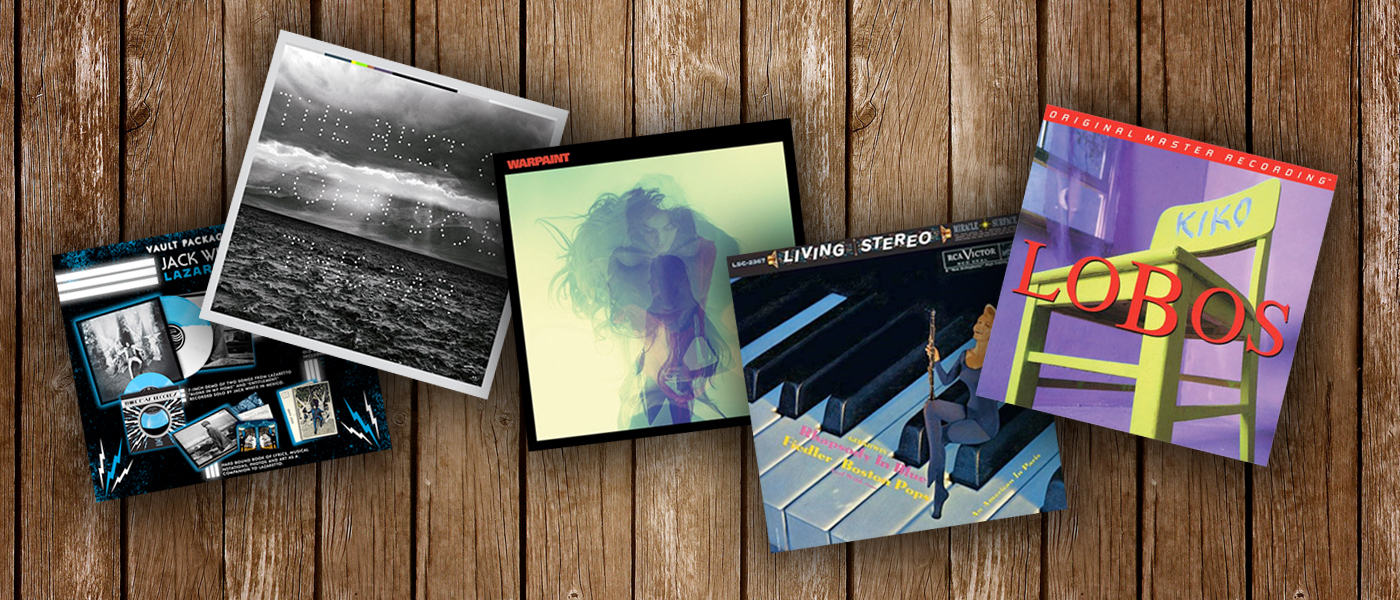The Black Keys “Turn Blue” Nonesuch Records
- Performance:

- Sound:

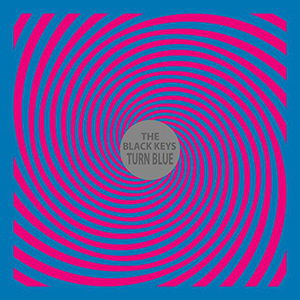
Well, it doesn’t look like those boys in the Black Keys are going anywhere any time soon, huh? My Guy in Nashville got to see them play a small club show last week as part of their promotions for Turn Blue. He forwarded me a review of the show that let me know that the record is Number One on some sort of Chart. This is great if you’re in the band. Or if you work at Nonesuch. For the fans, I don’t quite know what that means any more. What’s the point of having Album Charts if no one is being Albums? I just know that this is my favorite Black Keys record to date that I am aware of. It feels like a bit of a departure. It also feels right at home. That’s what I like about it most, I think. The whole thing feels like a delicately balanced high wire act. Without a net. These guys are going for it, now. The proverbial wind is at their backs, the sun on their collective Black Key face. And, presumably, a wad of cash in their pockets. They couldn’t be more deserving. No matter what Jack White says.
In case you missed it, White seems to think that the Keys stole his gig. I’ve never thought that their sounds were particularly similar, always felt like the two-player configuration was the only real thing that the groups had in common. And a love of the Blues, obviously. But they always purveyed different types of Blues based material. The Keys seemed to be much more immersed in the North Mississippi Hill Country tradition whereas the White Stripes worked the fertile Delta territory. Turn Blue is a horse of another color. Danger Mouse is back behind the boards, and that’s usually a seller for me, as is. The guy’s taken Turn Blue into outer space. Like Pink Floyd space. And I like to imagine that Dan Auerbach’s contributions lend Turn Blue it’s rawer Crazy Horse vibe. The two go together like peanut butter and chocolate. Gone are the El Camino Arena Rock choruses. Mostly. Gone also is the stripped down, two-man, guitar/drum attack that lent such an earthy feel to the group’s earliest efforts. There are lots of sounds in these grooves, not all of them easily identifiable. Both members of the duo are credited as keyboard players in the liners as is Danger Mouse so that might account for a bunch of the more “exploratory” sounds. But really, the beauty of this record is in that aforementioned balance between the spacey textures, the raunchy rockers, and the slightly-less-radio-ready melodies that keep your head bobbing along throughout this relatively brief record’s run time. The two songs those bookends the work offer a fair sampling of all of the above. “Weight of Love” starts things off in outer orbit while “Gotta Get Away” ends the party with a lighter, loopier party vibe. The record as a whole suggests that the Black Keys have reached the place where they can translate their wildest inclinations into a cohesive whole. And people will buy it. Hats off, boys.
Nonesuch typically does my favorite new vinyl releases, but this one isn’t quite as breath taking as others have been. That’s mostly because the packaging is a little flimsier than what I’m accustomed to from them. You still get a fine pressing & an included CD. And, in this instance, you get a poster too. More importantly, you get a bunch of well recorded, great songs to listen to on vinyl. What else is there?
(This record was purchased at MusicDirect.com.)
The White Stripes “Vault Package #19” Third Man Records
- Performance:

- Sound:

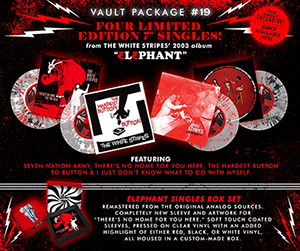
Speaking of Jack White… I’m still in his record club so Third Man is still sending me Vault Packages quarterly. You never know quite what you’re going to get from this gang, and Package 19 was a bit of a departure. Factually, it was a really, really big departure. Usually, you get a full-length record (sometimes a double full-length), a 7-inch single (although the Willie package’s single was a six-inch), and some type of ephemera (DVD, T-shirt, poster, book, whatever). This time, you did not. None of it. This time, you got four 7-inch singles. In a box. For $60. People got mad. I got excited. Then, mad. Then, appeased. Let’s see…
Here’s a bit of the press from the Third Man Records site, a little “straight from the horse’s mouth” action for you: “This package will consist of limited colored vinyl pressings of all of the White Stripes singles from their album Elephant.” The songs, in case you’re wondering were “Seven Nation Army,” “I Just Don’t Know What To Do With Myself,” “The Hardest Button To Button,” and “ There’s No Home For You Here.” I think that’s mostly where the “people got mad” part started. You see, these songs are all readily available for White Stripes fans. On vinyl. On Elephant. Which Third Man reissued last year, for crying out loud! So, really, for that $60, you got the B-sides of the singles (mostly covers of Big Jack’s fave Detroit bands of the era) and the box that the records came in. It was a custom made box, specifically for this occasion. But Vault members weren’t expressing much enthusiasm about it in the comments section; I can tell you that much right now. Then, there was this (and I quote): “Each record will be pressed on clear vinyl with an added vinyl highlight color insertion of either red, black or white.” But that didn’t really happen. The records were clear enough, but the “highlights” were more like “middle of the road lights” as the colors don’t really show up. I thought I might have gotten hold of a defective set, but a quick glance in the Vault comments cleared that right up for me. It was across the board. Oh, well, I don’t care much about colored vinyl anyway. No big deal. But my copy of “The Hardest Button” was most definitely defective. It was scratchy and not playable. I was mad. So, I contacted customer service. They advised me that they’d gotten all of two complaints about the sonics in this package, and then gave me instructions to return the record for replacement. So, that happened. Then, I was appeased, but the Vault comments also suggested that I was not alone. Maybe I was one of only two folks with enough time on their hands to contact customer service about the issue. Doesn’t seem probable, but okay. Finally, each record was housed in a “soft touch” coated sleeve. Which means that they feel weird. Sweet.
Now, here’s the part that will really make your head itch: “Later in 2014 each of the singles will be available individually, on black vinyl, with no box, to the general public.” So, that $60 didn’t really get you much in the way of exclusives unless you’re really into vinyl that was supposed to be colored that really was not. And the box. By golly, I got that box. And here’s the crazy thing about me: I’m glad.
Neil Young “A Letter Home: Deluxe Edition” Third Man Records/Reprise Records
- Performance:

- Sound:


Speaking of Jack White… he has a refurbished 1947 recording booth in his Nashville store. You can go in there, give him some American dollars, and record yourself playing a tune (or talking, I guess) in it. By the time you’re done, you have a 6-inch single to show off which comes in a mailing sleeve so that you can send it to someone somewhere if you don’t want to keep it yourself. The records sound like ass. This is decidedly beside the point. As I alluded to in this month’s Vault review, Willie Nelson released a recording booth version of “Red Headed Stranger” as part of his Third Man Vault release. Good enough for Willie, good enough for me. But are we ready for a whole record with this swirling, warbling, and metal sound of 1940’s vintage? Neil Young thinks so. Beyond that, Neil thought it was a good idea to put out a box set in addition to the standard single album version of A Letter Home. The box includes an “audiophile” version of the album which was recorded via direct feed from the booth. It also includes the standard, scratchy version of the album. And seven of those little 6-inch discs. And a full-sized booklet. And a DVD, and a CD. All for the low, low price of about $100. American.
Here’s the deal: Neil starts both sides off with spoken letters (home) to his deceased mom. It’s kinda touching in a strange way. It’s made stranger if you watch the DVD footage of him saying how “fortunate” he is to be able to talk to his mom this way. He talks to her about a weatherman. No kidding. Anyway, from there, you get a bunch of Neil playing covers in the booth. Predictably, there’s a Dylan song and a couple of Willie songs in there. I’ve enjoyed making fun of Gordon Lightfoot’s “If You Could Read My Mind” tune for years. Neil does that one too. He also does “My Hometown” by The Boss. And it ain’t so great. I like all of the other performances very much. The term “audiophile” as applied to the second record is misleading. A true audiophile would turn his/her nose up at the very idea, and then describe the record in angry tones using words that I don’t understand. But all of that metallic scratch is taken out. You still get the distant, 1940’s; off-mic sound, but you can still hear the notes and nuances. I’ll actually listen to this version for fun. I’ll probably only play the “standard” version as a demo for all two friends that I have who may be curious about this type of thing. We’ll see.
So much of this set is tied up with the presentation that I thought we should spend some extra time on that. At first glance, it looks like you’re getting a ton of material in this package. In fact, you get eleven songs and two “letters home.” Those same songs populate every format included in the box (singles, both records, the DVD, and the CD). The booklet is a total whiff. It has a couple of cool photos of Neil and Jack (Young and White, not Cassady and Kerouac), and lyric sheets. The artwork on the box’s outer cover is super cool as the masking tape is really holding a fake Polaroid of Neil in place. The lettering was done by hand. The record pressings look terrible and they have some noise, but it’s hard to tell whether it’s coming from the recording or the wax. This set is in no way comparable to any of Neil’s top shelf “archive” releases. But it’s fun, and I’m glad I have it. Just know what you’re getting into before you shell out any dough. It ain’t for everyone. Neil doesn’t care.
Neil Young “Live At The Cellar Door” Reprise Records
- Performance:

- Sound:

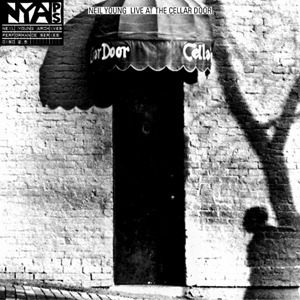
Speaking of Neil Young and his archive releases… he hit us with one a while back called Live At The Cellar Door. The venue was a small one that operated between 1965 to 1981 in Washington D.C. The album is a great one that operates on a really intimate level, perhaps more so than A Letter Home which was designed to be ultra-personal. The Cellar Door show was recorded November 30 – December 2, 1970 which means that it’s only about a month removed from the show that Neil documented on Massey Hall 1971. Consequently, the two sets share a fair amount of songs. And both shows were played in support of After The Gold Rush which had been released about three months previous to the Cellar show. Got it? Now, we have some historical context to work with. And some of the most compelling and warmest material from Uncle Neil’s singular career.
As I understand it, there were about a hundred folks in attendance for the Cellar Door recordings. You couldn’t prove it by the applause between songs. Sounds like about half that many. Neil’s acoustic guitar sounds like its mic’d directly rather than run through the house P.A. or an amplifier. He tinkers a lot on the piano throughout the performance, and he banters at some point about how he’d only picked the instrument up about a year prior to the show. And it shows. This is a typical “warts and all” Neil offering. When he flubs a note on the piano, you hear it. There do not appear to have been any attempts at masking or softening any of it. Hell, I guess he could have just left those performances off the record entirely if he’d wanted to hide anything. The fact that he didn’t just confirms Neil’s place in my opinion as perhaps the most honest popular musician… ever? I get the impression that Neil’s making music for Neil and that the rest of us are welcome to listen in if we’d like. Or not. A Letter Home was clearly a project close to Neil’s heart. He almost certainly saw the slings and arrows coming before they arrived. They haven’t exactly blotted out the sun, but folks have been confused, even angry. How could Neil, who has been all over the media touting his new high-def digital music player as a savior for all that is wrong in the world of portable audio, foist this seemingly inferior recording on his adoring public? He wanted to. He found a sound that spoke to him, and he offered it for our consideration. I like old things. I’m in. But there are few things in the world that I love more than hearing my favorite musicians playing informally without the soul sucking trappings of modern day technology to get in the way. And there is absolutely nothing to get between you and Neil when listening to Live At the Cellar Door. By the time it was recorded, Neil had two legitimately great solo records to pull material from (he offers a piano/vocal version of “Cinnamon Girl” on Cellar and says it’s the first time he’d played it that way) plus his work with Buffalo Springfield and a less-than-great solo debut. Pretty soon, he’d throw his audience another curve by playing a bunch of unfamiliar songs on a concert tour to promote his most successful album yet. But the Cellar Door record finds Neil giving the people what they want. Get it while you can.
If you’re unfamiliar with Neil’s archive releases, you should fix that ASAP. The pressings are amongst the cleanest I’ve found. The material, so far, has been fascinating. From electric Crazy Horse shows to 1980’s country material to these acoustic recordings. And the studio reissues are superior to the originals in my opinion. If you like Acoustic Neil, you need Cellar Door. You can shut your eyes and pretend that you were the one hundred and first audience member. Or don’t. Neil doesn’t care.
(This record was purchased at MusicDirect.com.)
Jerry Garcia and David Grisman “Jerry Garcia / David Grisman” Mobile Fidelity Sound Labs
- Performance:

- Sound:

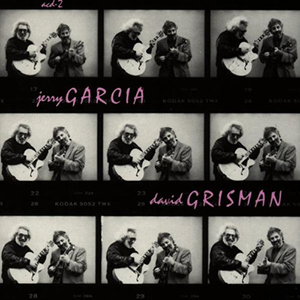
Speaking of Jerry Garcia… wait, we haven’t done that, huh? Hold on.
Speaking of intimate recordings… Mobile Fidelity released one of my favorite records from my youth last month. I mean, the record was released last month. My youth expired a long time ago. It’s by Jerry Garcia and David Grisman, and carries the far-out, psychedelic ’60’s inspired title of… Jerry Garcia / David Grisman. This makes sense when you hear the record. There’s nothing around to muddle up the sounds or performances on this disc. No fluff, no, sir. Just some sparsely recorded acoustic music with Garcia handling the guitar in his most inimitable fashion while Grisman wrestles with his mandolin. This type of performance is right in MoFi’s wheelhouse, if you ask me. I had high hopes when I saw that it was in the pipeline a while back. No matter how excited I got, it exceeded expectations. You gotta be thankful when that happens. This one’s an instant classic.
I bought it on cassette when I was around 16 years old. This is the first time it’s been released on vinyl so it doesn’t count for a reissue. I’d forgotten about this one for years. I haven’t had a tape deck in as long as I can remember as my deck was for playing bootlegs of live shows that I’d attended. Those have been digitized now like everything else. So it goes. There’s nothing digital about this record, gang. Much like Neil’s Cellar Door set; this is Garcia at his most transparent. Especially vocally. His voice is amongst the most recognizable in music, but I’ve never heard it transcribed in such detail. The grit and the grain is most obvious in “Two Soldiers” which is listed as a “traditional arranged by Garcia / Grisman.” I’m unfamiliar with the tune outside of the record’s context, but it feels like a lot of the tunes on here in that the whole affair is outside of time. And it challenges Garcia to reach and hold notes that I’d not heard him attempt before. The duo is accompanied by a bassist and a percussionist with a little fiddle thrown in here and there for good measure. Much like MoFi’s version of Beck’s Sea Change (which is the record I use to impress upon captive audiences the sonic superiority of vinyl versus all else), a lot of the fun is in the location of the percussive sounds. Those sounds are what really show up the soundstage for the party that it is. Meanwhile, Grisman’s mandolin playing has such striking clarity that you feel like you ought to be able to absorb his abilities via osmosis. (I got out my mandolin to test this truth, but was disappointed to find that it was all an acoustic dream.) Dead fans will thrill to the seven minute strains of “Friend of the Devil” while Blues fans may find more pleasure in the group’s take on “The Thrill Is Gone” or “Walkin’ Boss” which is particularly catchy and fun. I wouldn’t hesitate for one second to play this disc proudly in front of my grandmother or my best friend or my six year old nephew. It’s a truly universal piece of work. The sixteen minute “Arabia” had the universal bit covered on its own. In fact, the universe is a little happier for having this work within it. The world’s a better place.
This is as fine a release as any I’ve heard from Mobile Fidelity, and I’m really looking forward to what comes next. I feel like MoFi does its best work with quieter, cleaner material and this certainly fits the bill. If you’re a Jerry Garcia fan, you need this record. If you’re a fan of worldly acoustic music with rich harmonics and unparalleled detail, you’ll need an extra copy for when you wear the first one out. Get moving.
(This record was purchased at MusicDirect.com.)


